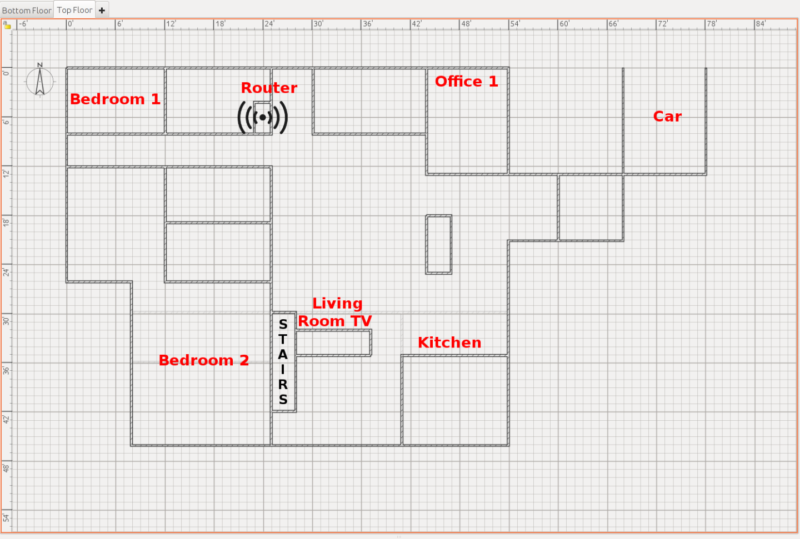The Ars Technica semi-scientific guide to Wi-Fi Access Point placement

Enlarge / The top floor of our test house is relatively straightforward-although like many houses, it suffers from terrible router placement nowhere near its center. (credit: Jim Salter)
Here at Ars, we've spent a lot of time covering how Wi-Fi works, which kits perform the best, and how upcoming standards will affect you. Today, we're going to go a little more basic: we're going to teach you how to figure out how many Wi-Fi access points (APs) you need, and where to put them.
These rules apply whether we're talking about a single Wi-Fi router, a mesh kit like Eero, Plume, or Orbi, or a set of wire-backhauled access points like Ubiquiti's UAP-AC line or TP-Link's EAPs. Unfortunately, these "rules" are necessarily closer to "guidelines" as there are a lot of variables it's impossible to fully account for from an armchair a few thousand miles away. But if you become familiar with these rules, you should at least walk away with a better practical understanding of what to expect-and not expect-from your Wi-Fi gear and how to get the most out of it.
Before we get startedLet's go over one bit of RF theory (radio-frequency) before we get started on our ten rules-some of them will make much better sense if you understand how RF signal strength is measured and how it attenuates over distance and through obstacles.
Read 53 remaining paragraphs | Comments